Fairbanks Banjos
Construction & Tone Rings

1901 - The Fairbanks Whyte Laydie
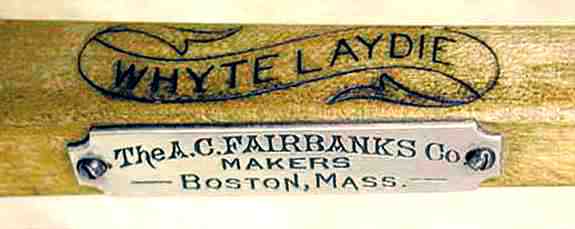
The Whyte Laydie was probably David Day's greatest
innovation.
It differed from the previous
Electric models in several notable ways. It was
one of the first commercially available
banjos to use the natural color of the maple. The
unstained light colored maple neck and
pot gave the banjo a unique appearance at a time when
most banjos were made
of fairly dark stained mahogany or other darker woods.
The necks of the Whyte Laydie and the Fairbanks
banjos
that followed were considerably stouter
than the Electric necks. This was probably done
to accomodate the steel strings which
were becoming popular at that time. The earlier
ivory pegs and tailpiece used on the higher grade banjos
also gave way to the steel pegs and tailpiece better
suited to the steel strings.
Day added "ears" to the classic Fairbanks peghead
shape
creating the familiar
shape in use to this day. The earlier shape was
still used on the highest grade instruments.

Familiar Fairbanks "Gryphon" peghead inlay.
Note typical cracking of the dyed pearwood overlay.
|
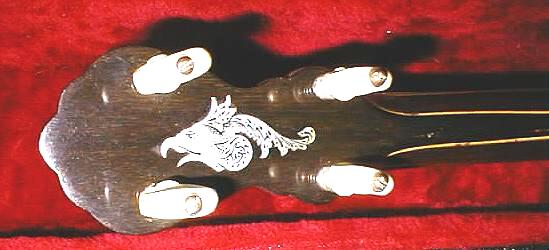
The earlier "Gryphon" inlay first used on the back
of the Electric pegheads. This peghead shape
lacks the ears of the later Whyte Laydie model.
|
Day's greatest change was his means of attaching the
brackets
or shoes to the banjo pot.
He invented a heavy brass bracket band to which the
shoes
were attached directly
(patent issued July 27, 1909). This eliminated
the many holes drilled through the pot for attaching the shoes
and added substantial mass to the pot. The tone
ring was still essentially the standard Electric tone ring.
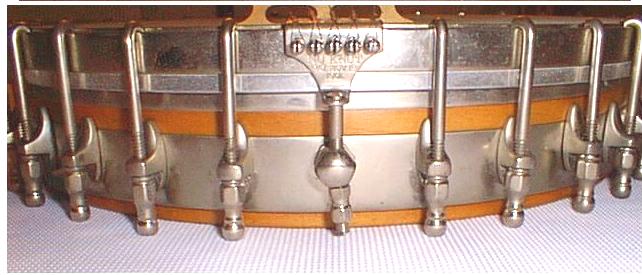
The Whyte Laydie bracket band with typical hooks and nuts and a
NoKnot
tailpiece.
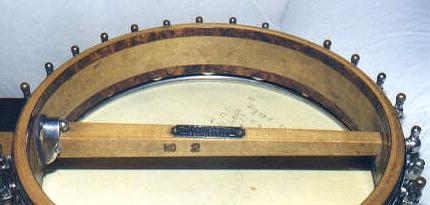
The inside of a No.2 Whyte Laydie pot showing the tone ring,
horseshoe
neck brace
and the lack of holes and bolts previously used to attach the brackets.
The Whyte Laydie was a tremendous success. It
was
available as the simple No.2 model
shown above and as the #7 model with a carved
heel,
colorful wooden marquetry on the
bottom rim of the pot and extraordinary pearl inlays
on the peghead, fingerboard, backstrap
and heel cap. Today it is one of the most
treasured
of the vintage banjos. The brilliant tone
of the Whyte Laydie is excellent for classic banjo
playing
as well as contemporary melodic
and old-time playing styles.
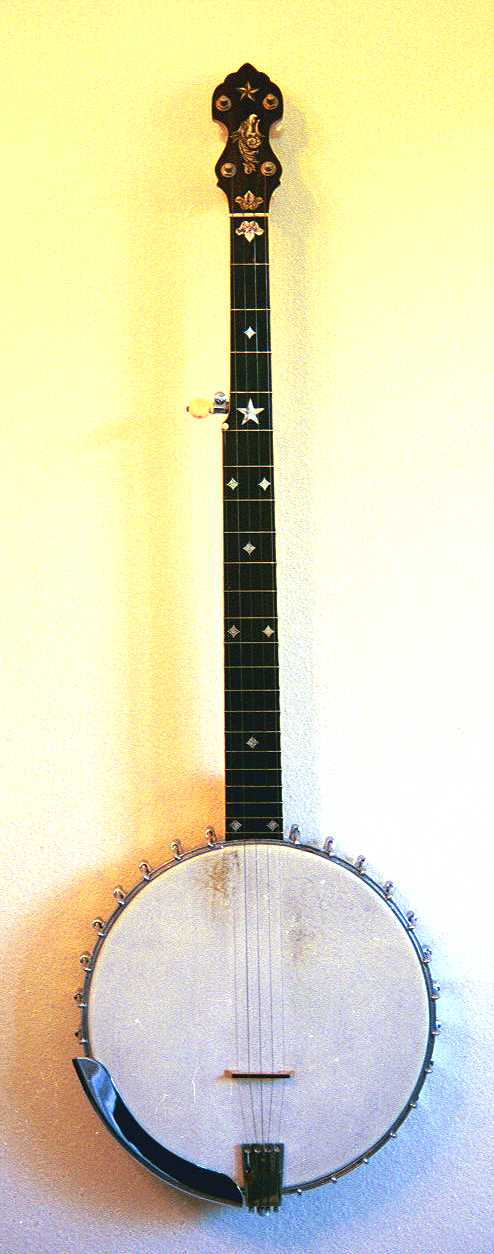
|
This 1907 Fairbanks No.2 Whyte Laydie was my first
banjo.
It was found in the window of a Baltimore shoe store, for sale
by the
estate of the former owner.
It is hard to find a better combination of superb bright tone
and excellent
playability.
|
To be continued....

On to Variations on the
Electric
Theme
- Return to main
Fairbanks
Banjos page -
Please contact
me with any additions, corrections or comments in general.
![]()




